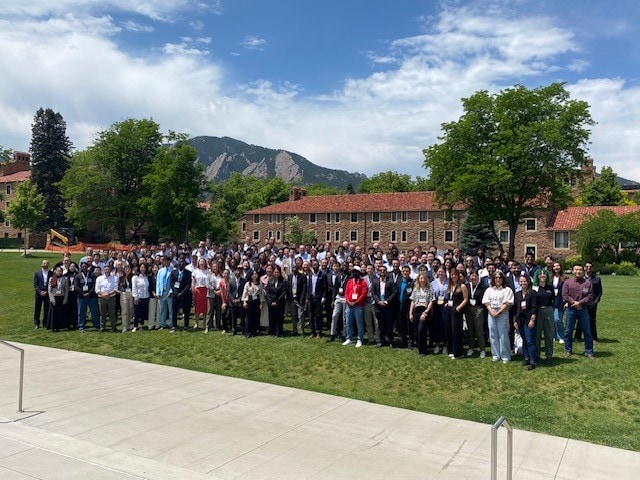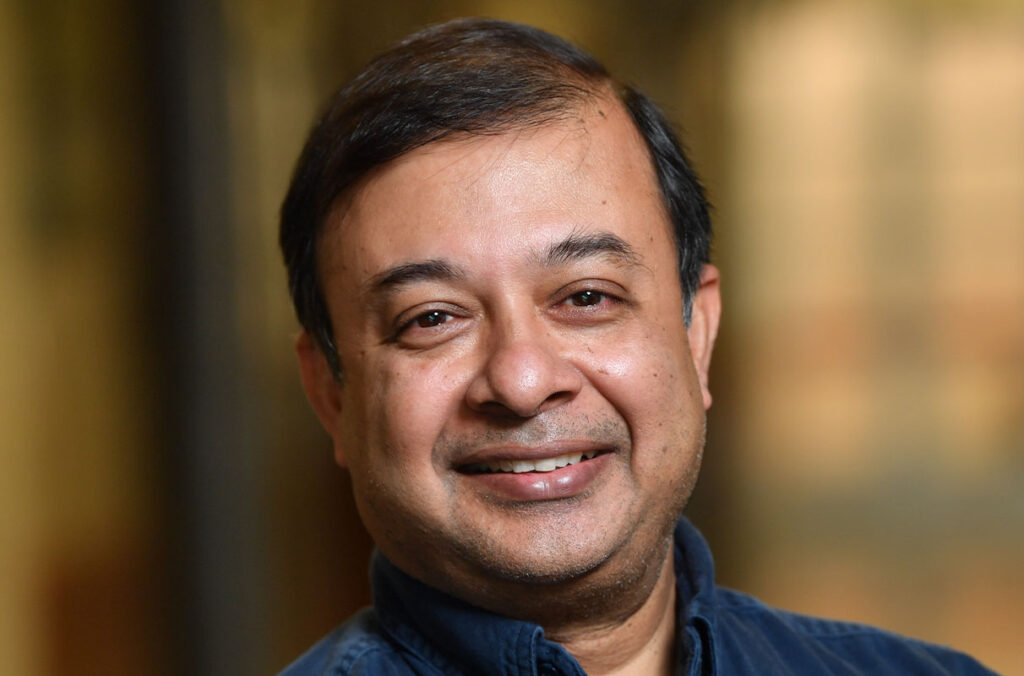
[Image above] PACC-FMAs attendees learn about native plants in Panama during a tour of the Gamboa Sloth Sanctuary. Credit: ACerS
Despite a forecast filled with thunderstorms, the weather remained sunny and warm for attendees at this year’s Pan American Ceramics Congress (PACC) and Ferroelectrics Meeting of Americas (FMAs), held April 7–11, 2024, in Panama City, Panama.
PACC is a relatively new conference for ACerS, with the first one being held in 2022 alongside the second-ever FMAs. The two meetings were held jointly again this year because the partnership helps “facilitate interactions in and among the countries of the Americas” and “provides an insight into the work being done in these countries for others around the world,” as explained by the meeting chairs in the conference guide.
The PACC-FMAs 2024 meeting chairs were ACerS president and Fellow Rajendra Bordia, ACerS past president and Distinguished Life Member Sylvia Johnson, and ACerS past president and Fellow Sanjay Mathur on the PACC side and ACerS Distinguished Life Member Amar Bhalla representing FMAs.

This year, the conference witnessed a surge in attendance compared to 2022, when countries were still learning how to navigate the COVID-19 pandemic. More than 220 attendees from 23 countries attended PACC-FMAs, including 64 students.
Of the students who attended, ACerS sponsored the attendance of a record 53 students from several South American countries. This significant achievement, which was thanks largely to the work of Alfred University Inamori Professor Steven Tidrow, offered a valuable and potentially life-changing experience for the young attendees.

“This conference has grown from 100 people to 250, but the camaraderie of the first one has carried over. I am so pleased to see so many new faces, many of them students who are experiencing their first conference. A big thank you to all the organizers and those who funded the student participation and the conference,” says Johnson.
Below are highlights from PACC-FMAs 2024.
Plenary talks share hope for the future
The conference began on Monday, April 8, with an introduction by meeting chairs Bordia, Johnson, and Bhalla, who shared their excitement for the conference’s growth and high student attendance.
“We [ACerS] want to be responsive to the large number of our international colleagues,” Bordia said, and the successful turnout at this conference demonstrates that commitment.
Three plenary talks followed the introduction, and each speaker echoed the meeting chairs’ hopes for the future. The first plenary speaker, Olivia Graeve of the University of California, San Diego, discussed her research on materials for extreme environments but then also talked about her ENLACE summer research program. This program, which started in 2013, brings both high school and university students from all over Mexico and the United States to conduct research at UC San Diego each summer. While the scientific aspects of the program are important, Graeve emphasized that the most critical takeaway are the friendships from both sides of the border, which will help break down walls and “let us make history,” she said, quoting former first lady Eleanor Roosevelt.
The second plenary speaker, Manvendra Dubey of Los Alamos National Laboratory, described the historical trends driving climate change and steps that can be taken to tackle this dire challenge. Fortuitously, Dubey ended up demonstrating Graeve’s point that friendships made at a young age last a lifetime when he and Bordia discovered they used to be classmates back in university in India, a realization they had not made prior to the conference.

The third plenary speaker was Steven Tidrow, who as mentioned earlier helped identify and raise funds for students to attend PACC-FMAs. His talk focused on building bridges, not fences in education and used examples from his experience developing university programs.
Career talks demonstrate the many pathways to materials science
On Wednesday, April 10, students had the opportunity to learn about the many pathways to materials science in a career talks session organized by Johnson. This session was the first of its kind, and almost 20 young and senior professionals shared their journeys in materials science with attendees in 10-minute blocks.

Students shared their journeys in materials science so far during a poster session on Monday night, which saw a room packed with presenters and attendees eager to learn about their research.

Sloth sanctuary tour provides breath of fresh air
One of the benefits of an international conference is the opportunity to visit a new country. After two and a half days of insightful and rigorous talks, attendees had the opportunity to explore Panama through an ACerS-arranged tour of the Gamboa Sloth Sanctuary.

During this outing, attendees also took a boat ride on the Gatun Lake, an artificial lake that forms a major part of the Panama Canal. During this ride, attendees had the good fortune of seeing all three monkeys that are native to this area: capuchin, howler, and Geoffroy’s tamarin.

View more photos from PACC-FMAs 2024 on ACerS Flickr. The next PACC-FMAs will take place in spring 2026 at a location to be determined in Central or South America.
Author
Lisa McDonald
Spotlight Categories
- Meeting Highlights


